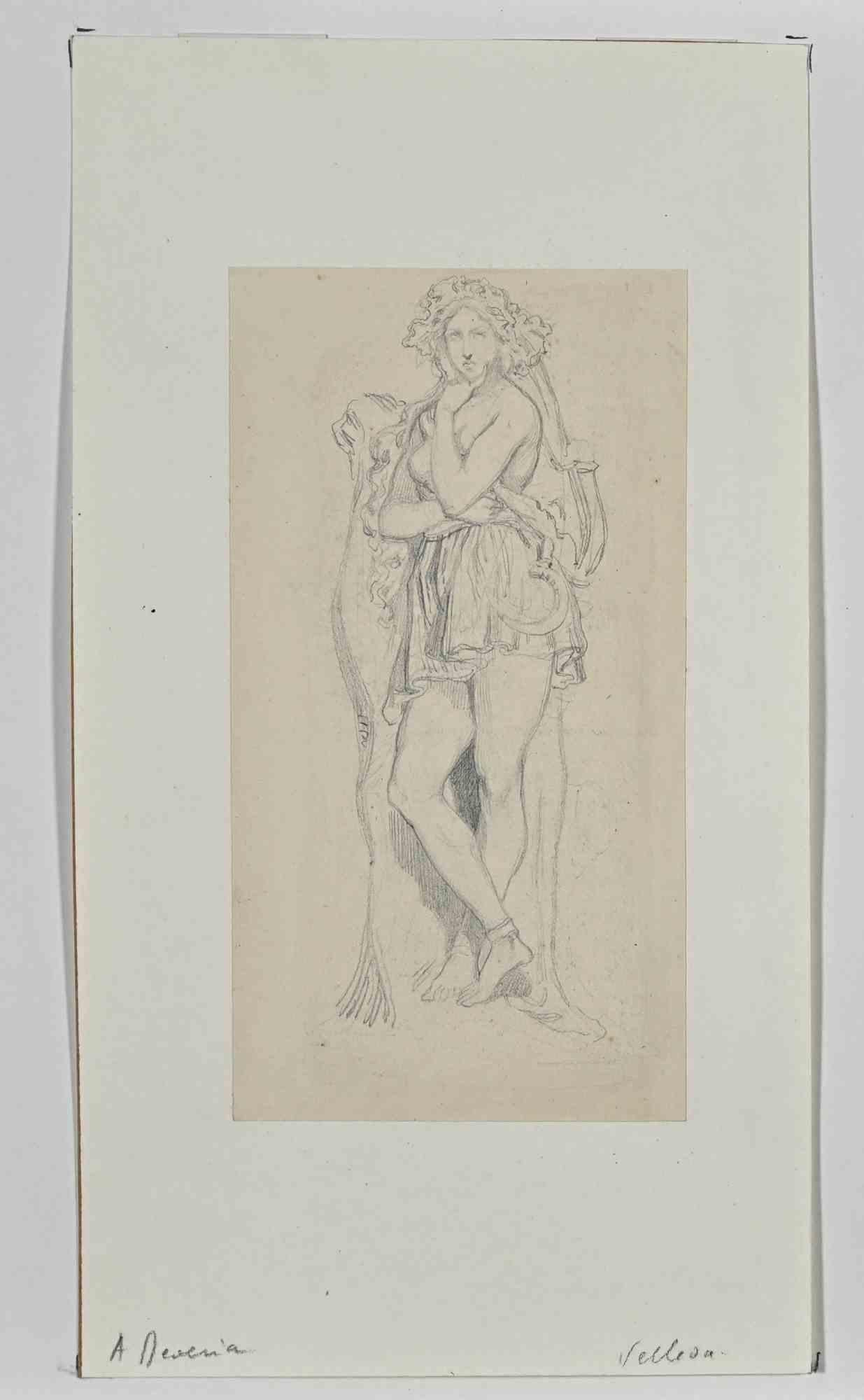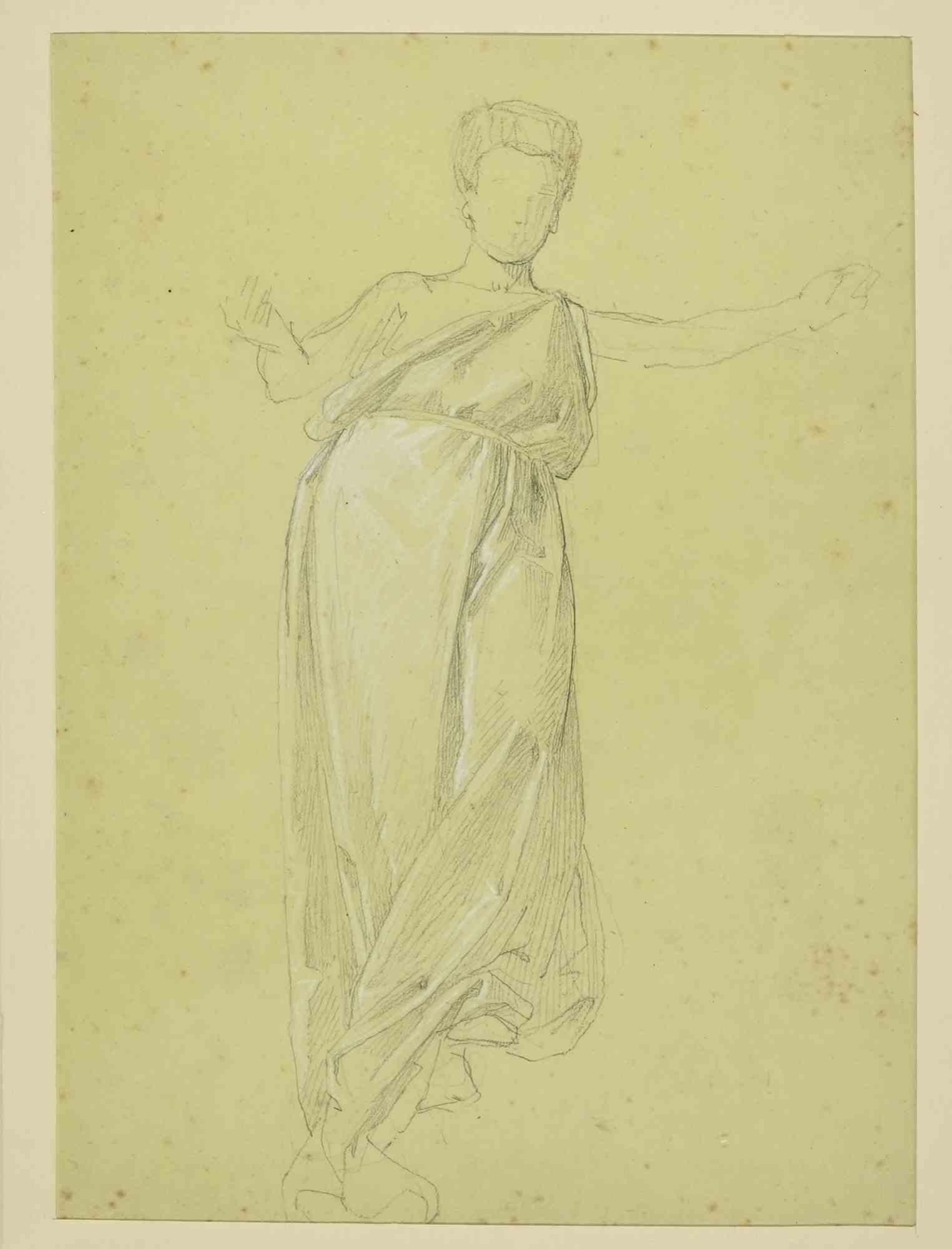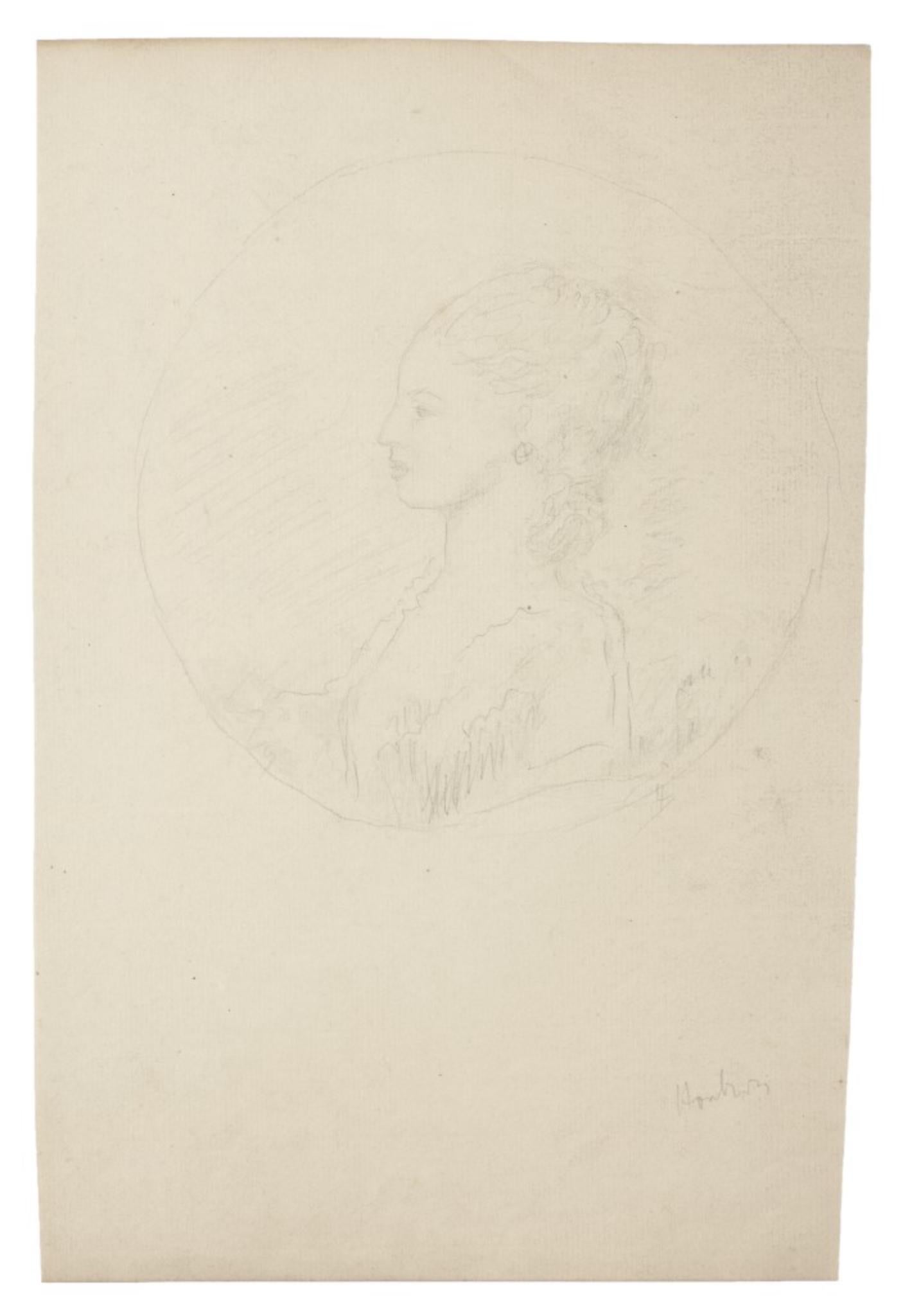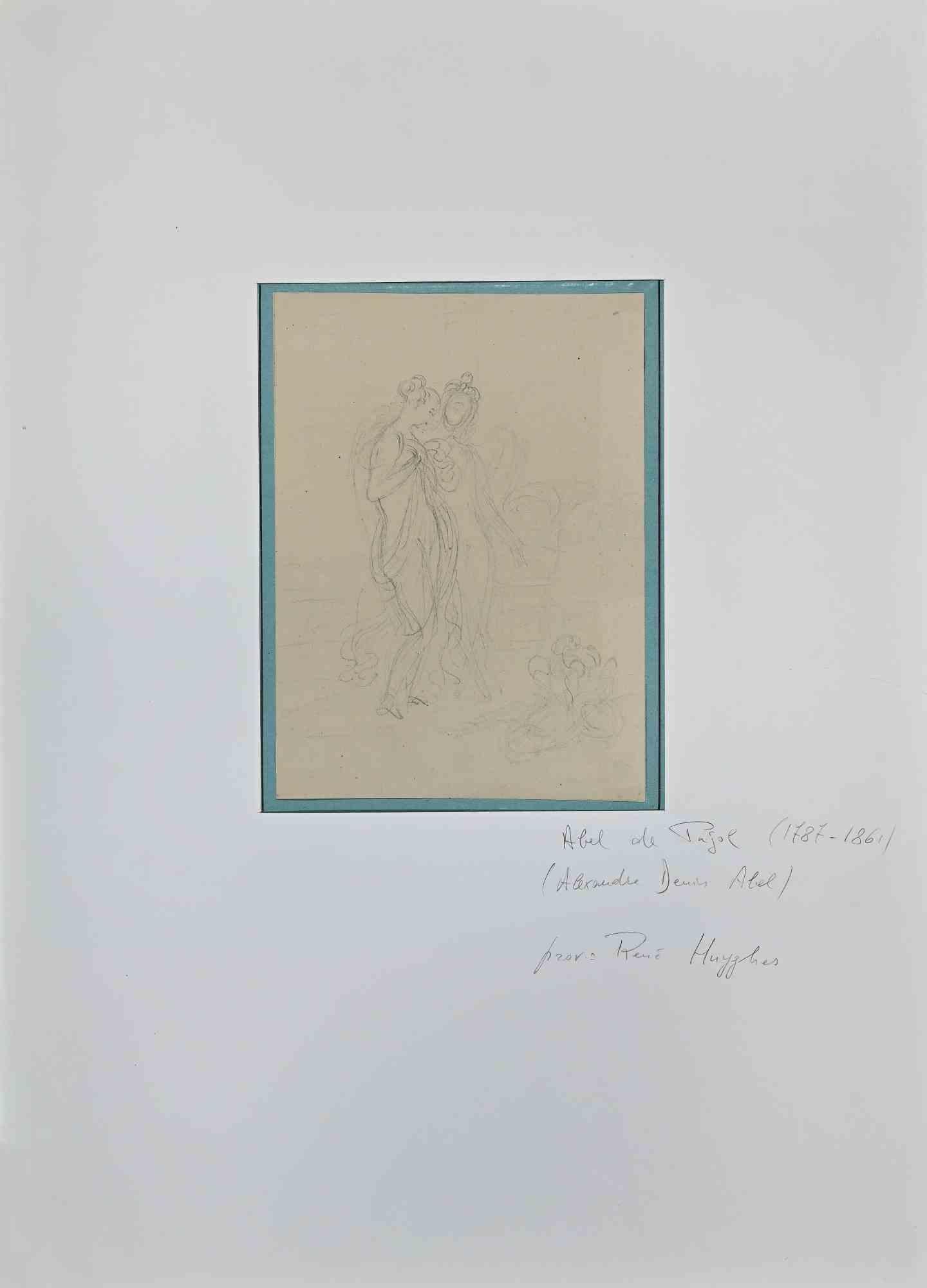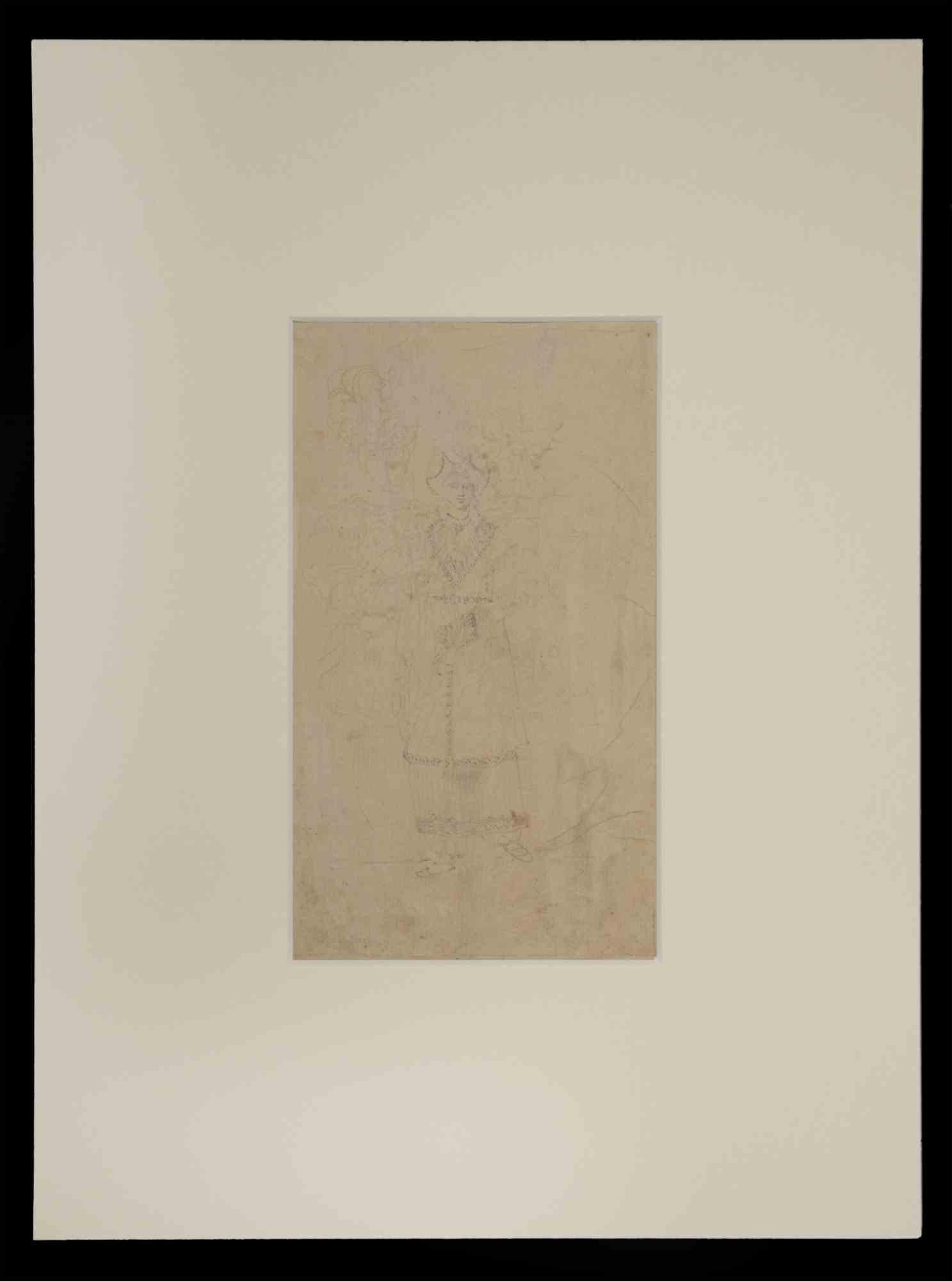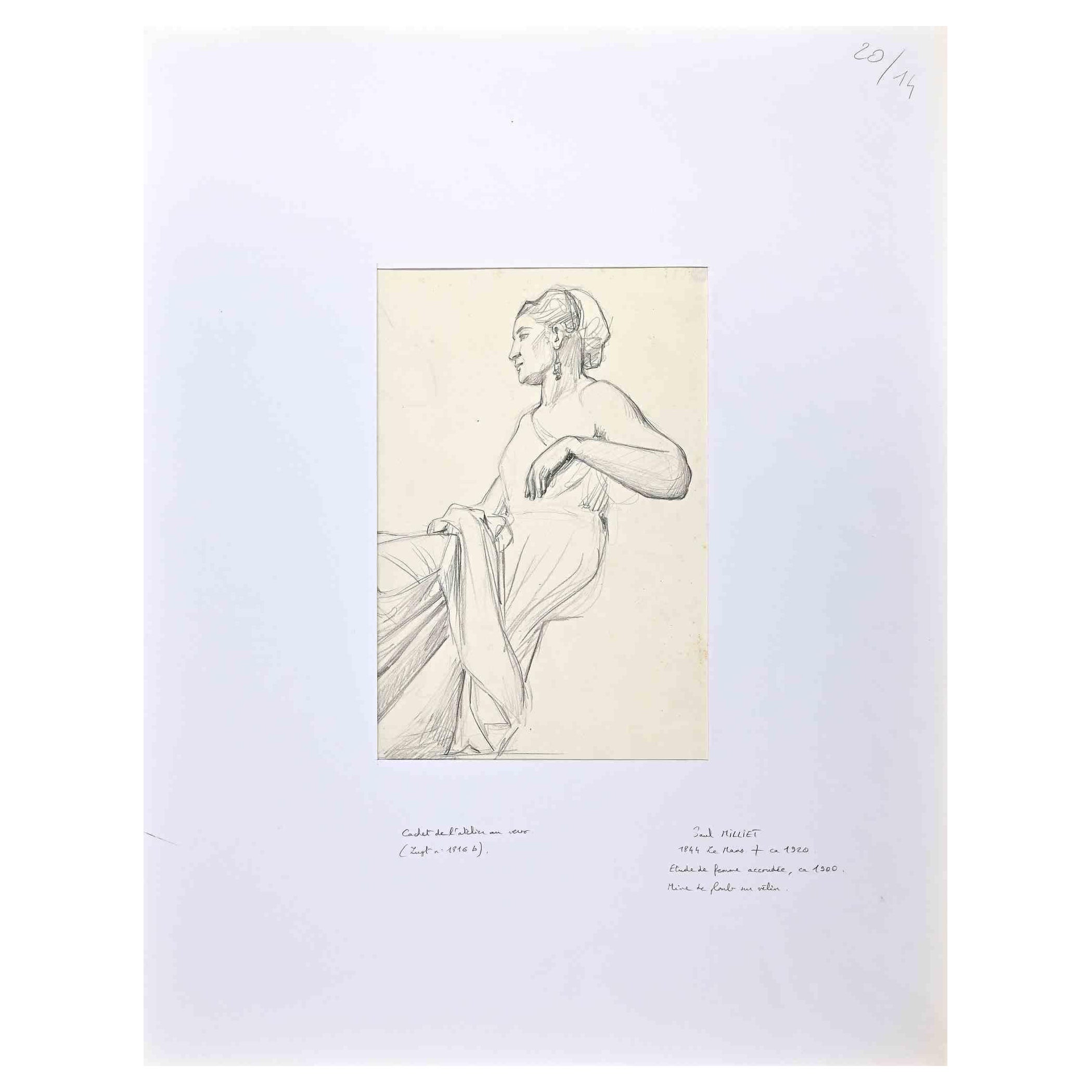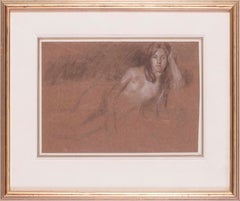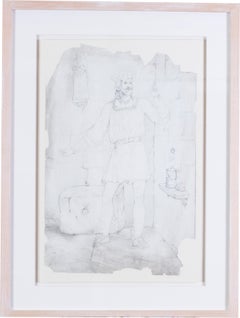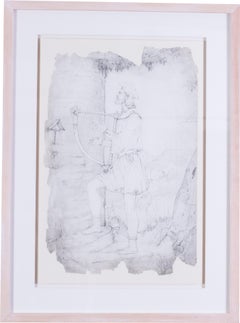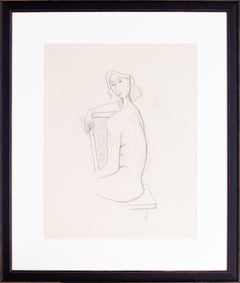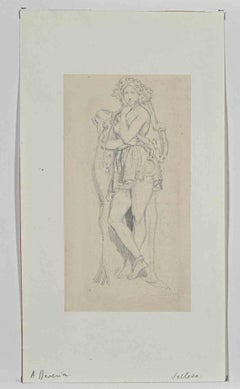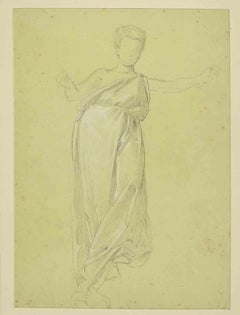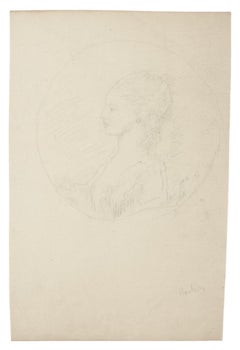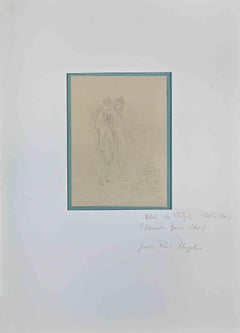Items Similar to 19th Century drawing attributed to John Flaxman of a classical maiden
Want more images or videos?
Request additional images or videos from the seller
1 of 7
19th Century drawing attributed to John Flaxman of a classical maiden
$843.68
£620
€724.57
CA$1,166.69
A$1,270.23
CHF 678.26
MX$15,333.63
NOK 8,526.95
SEK 7,931.06
DKK 5,412.15
About the Item
Attributed to John Flaxman (British, 1755- 1826)
Study of a classical maiden
Pen and ink on paper
5.1/2 x 3.1/8 in. (14 x 8 cm.)
- Attributed to:John Flaxman (1755 - 1826, British)
- Dimensions:Height: 5.5 in (13.97 cm)Width: 3.13 in (7.96 cm)Depth: 1 in (2.54 cm)
- Medium:
- Movement & Style:
- Period:
- Condition:In good condition.
- Gallery Location:Petworth, GB
- Reference Number:1stDibs: LU540310202642
About the Seller
4.9
Gold Seller
Premium sellers maintaining a 4.3+ rating and 24-hour response times
Established in 2010
1stDibs seller since 2017
277 sales on 1stDibs
Typical response time: 3 hours
- ShippingRetrieving quote...Shipping from: Petworth, United Kingdom
- Return Policy
More From This Seller
View AllBritish 19th Century drawing of a nude by Edward Stott
By Edward Stott
Located in Petworth, West Sussex
Edward Stott, ARA (British, 1859 - 1918)
Reclining nude
Pastel and black crayon
8.1/2 x 12.1/4 in. (21.7 x 31.2 cm.)
Provenance: Abbott and Holder, London
A few years after its foundation in 1886, a critic referred to the New English Art Club as that Steery, Starry, Stotty. Stotty referred to William Stott of Oldham and Edward William Stott. The four men had in common the love French plein air painting...
Category
19th Century Academic Nude Drawings and Watercolors
Materials
Crayon, Pastel
Pre-Raphaelite, early 19th Century drawing by the British artist Lord Leighton
By Frederic Leighton
Located in Petworth, West Sussex
Lord Frederick Leighton (British, 1830-1896)
A Medieval Allegory
Not signed
pencil on paper
the fragment measures approx. 19.1/2 x 13 in.
(49.5 x 33 cm.)
Provenance: Gifted by Leighton to his cousin Edith Emily Jellicorse, nee Garnham, and thence by descent.
We would like to thank Daniel Robins, the curator at Leighton House for the authenticating this work in full.
Daniel has suggested this study would have been executed when Leighton was studying in Frankfurt
Leighton was born in Scarborough to Augusta Susan and Dr. Frederic Septimus Leighton. He received his artistic training on the European continent, first from Eduard von Steinle and then from Giovanni Costa. According to Daniel Robbins, the curator at Leighton House, This drawing comes from the time Leighton studied under Eduard von Steinle. He then studied at the Accademia di Belle Arti in Florence. From 1855 to 1859 he lived in Paris, where he met Ingres, Delacroix, Corot and Millet. In 1860, he moved to London, where he associated with the Pre-Raphaelites. In 1864 he became an associate of the Royal Academy and in 1878 he became its President (1878–96). American art critic Earl Shinn claimed at the time that "Except Leighton, there is scarce any one capable of putting up a correct frescoed figure in the archway of the Kensington Museum." His paintings represented Britain at the great 1900 Paris Exhibition. Leighton was knighted at Windsor in 1878 and was created a baronet, of Holland Park Road eight years later. He was the first painter to be given a peerage. Leighton remained a bachelor and rumours of him having an illegitimate child with one of his models, in addition to the supposition that Leighton may have been a homosexual, continue to be debated. On his death his barony was extinguished after existing for only a day; this is a record in the Peerage. His house in Holland Park, London has been turned into a museum. It contains many of his drawings and paintings, as well as some of his former art collection including a painting dedicated to Leighton by Sir John Everett Millais. The house also features many of Leighton's inspirations, including his collection of Iznik tiles. Its centrepiece is the magnificent Arab Hall. Leighton was an enthusiastic volunteer soldier, enrolling with the first group to join the 38th Middlesex (Artists') Rifle Volunteer Corps (later to be known as the Artists Rifles...
Category
19th Century Pre-Raphaelite Figurative Drawings and Watercolors
Materials
Paper, Pencil
An early 19th Century drawing by the British pre-Raphaelite artist Lord Leighton
By Frederic Leighton
Located in Petworth, West Sussex
Lord Frederick Leighton (British, 1830-1896)
A very early study of a Medieval Minstrel
pencil on paper
Not signed
the fragment measures approx. 19.1/2 x 13 in.
(49.5 x 33 cm.)
Provenance: Gifted by Leighton to his cousin Edith Emily Jellicorse, nee Garnham, and thence by descent.
We would like to thank Daniel Robins, the curator at Leighton House for the authenticating this work in full.
Daniel has suggested this study would have been executed when Leighton was studying in Frankfurt
Leighton was born in Scarborough to Augusta Susan and Dr. Frederic Septimus Leighton. He received his artistic training on the European continent, first from Eduard von Steinle and then from Giovanni Costa. According to Daniel Robbins, the curator at Leighton House, This drawing comes from the time Leighton studied under Eduard von Steinle. He then studied at the Accademia di Belle Arti in Florence. From 1855 to 1859 he lived in Paris, where he met Ingres, Delacroix, Corot and Millet.
In 1860, he moved to London, where he associated with the Pre-Raphaelites. In 1864 he became an associate of the Royal Academy and in 1878 he became its President (1878–96). American art critic Earl Shinn claimed at the time that "Except Leighton, there is scarce any one capable of putting up a correct frescoed figure in the archway of the Kensington Museum." His paintings represented Britain at the great 1900 Paris Exhibition.
Leighton was knighted at Windsor in 1878 and was created a baronet, of Holland Park Road eight years later. He was the first painter to be given a peerage.
Leighton remained a bachelor and rumours of him having an illegitimate child with one of his models, in addition to the supposition that Leighton may have been a homosexual, continue to be debated. On his death his barony was extinguished after existing for only a day; this is a record in the Peerage. His house in Holland Park, London has been turned into a museum. It contains many of his drawings and paintings, as well as some of his former art collection including a painting dedicated to Leighton by Sir John Everett Millais. The house also features many of Leighton's inspirations, including his collection of Iznik tiles. Its centrepiece is the magnificent Arab Hall.
Leighton was an enthusiastic volunteer soldier, enrolling with the first group to join the 38th Middlesex (Artists') Rifle Volunteer Corps (later to be known as the Artists Rifles...
Category
19th Century Pre-Raphaelite Figurative Drawings and Watercolors
Materials
Paper, Pencil
German Expressionist drawing by Carl Hofer of one of his models
By Carl Hofer
Located in Petworth, West Sussex
Carl Hofer (German, 1875 – 1955)
Das Modell (The artist’s model)
Black crayon on paper
Signed with monogram ‘CH’ (lower right)
18 x 14.1/8 in. (45.8 x 36 cm.)
Provenance: These works come from the artist’s second wife Elizabeth and from then by descent.
Carl Hofer was a German expressionist painter and the director of the Berlin Academy of Fine Arts. One of the most important painters of the Expressionist movement, his work was among those that was considered degenerate art by the Nazis. He studied in Karlsruhe under Hans Thoma. He first visited Paris in 1899 making acquaintance with Julius Meier-Graefe. In 1902 he studied in Stuttgardt and became friends with the sculptor Hermann Haller...
Category
20th Century Expressionist Figurative Drawings and Watercolors
Materials
Paper, Crayon
Lord Frederick Leighton drawing, British pre-Raphaelite, original
By Frederic Leighton
Located in Petworth, West Sussex
Lord Frederick Leighton (British, 1830-1896)
Apprehending a thief
pencil on paper
the fragment measures approx. 17.1/3 x 11in. (44 x 28cm.)
signed ‘F Leighton’ (lower right)
Provenance: Gifted by Leighton to his cousin Edith Emily Jellicorse, nee Garnham, and thence by descent
We would like to thank Daniel Robins, the curator at Leighton House for the authenticating this work in full.
Daniel has suggested this study would have been executed when Leighton was studying in Frankfurt
Leighton was born in Scarborough to Augusta Susan and Dr. Frederic Septimus Leighton. He received his artistic training on the European continent, first from Eduard von Steinle and then from Giovanni Costa. According to Daniel Robbins, the curator at Leighton House, This drawing comes from the time Leighton studied under Eduard von Steinle. He then studied at the Accademia di Belle Arti in Florence. From 1855 to 1859 he lived in Paris, where he met Ingres, Delacroix, Corot and Millet. In 1860, he moved to London, where he associated with the Pre-Raphaelites. In 1864 he became an associate of the Royal Academy and in 1878 he became its President (1878–96). American art critic Earl Shinn claimed at the time that "Except Leighton, there is scarce any one capable of putting up a correct frescoed figure in the archway of the Kensington Museum." His paintings represented Britain at the great 1900 Paris Exhibition. Leighton was knighted at Windsor in 1878 and was created a baronet, of Holland Park Road eight years later. He was the first painter to be given a peerage. Leighton remained a bachelor and rumours of him having an illegitimate child with one of his models, in addition to the supposition that Leighton may have been a homosexual, continue to be debated. On his death his barony was extinguished after existing for only a day; this is a record in the Peerage. His house in Holland Park, London has been turned into a museum. It contains many of his drawings and paintings, as well as some of his former art collection including a painting dedicated to Leighton by Sir John Everett Millais. The house also features many of Leighton's inspirations, including his collection of Iznik tiles. Its centrepiece is the magnificent Arab Hall. Leighton was an enthusiastic volunteer soldier, enrolling with the first group to join the 38th Middlesex (Artists') Rifle Volunteer Corps (later to be known as the Artists Rifles...
Category
19th Century Pre-Raphaelite Figurative Drawings and Watercolors
Materials
Paper, Pencil
17th Century French sanguine drawing of maiden's harvesting flowers
By (Circle of) Nicolas Poussin
Located in Petworth, West Sussex
Circle of Nicolas Poussin (French, 1594-1665)
Maiden’s harvesting flowers
Sanguine on paper
8. ¾ in. (22 cm.) tondo
Category
17th Century Old Masters Figurative Drawings and Watercolors
Materials
Paper
You May Also Like
Figure of Woman - Drawing by Achille Devéria - Early 19th century
Located in Roma, IT
Figure of Woman is a Pencil Drawing realized by Achille Deveria (1800-1857).
Good condition on a little paper included a blue cardboard passpartout (31.5x24.5 cm).
Signature on pla...
Category
Early 19th Century Modern Figurative Drawings and Watercolors
Materials
Pencil
Ancient Woman - Drawing - Early 20th Century
Located in Roma, IT
Ancient woman is a modern artwork realized by an Artist of the early 20th century.
Pencil drawing on paper.
Diffused foxings on paper.
Includes frame.
Category
Early 20th Century Modern Figurative Drawings and Watercolors
Materials
Paper, Pencil
Figure - Original Pencil Drawing - 19th Century
Located in Roma, IT
"Figure" is an original pencil drawing on ivory-colorated paper by Anonymous Artist of XIX Century.
In very good conditions.
Sheet dimension: 29 x 19.8 cm.
This is an original dr...
Category
20th Century Modern Figurative Drawings and Watercolors
Materials
Pencil
Female Figures - Drawing by Abel de Pujol - Early 19th Century
Located in Roma, IT
Female Figures is a Pencil Drawing realized by Abel de Pujol (1785-1861).
Good condition included a white and blue cardboard passpartout (49x35 cm).
No signature.
Alexandre-Denis-...
Category
Early 19th Century Modern Figurative Drawings and Watercolors
Materials
Pencil
Portrait of Woman - Original Drawing - 19th Century
Located in Roma, IT
Portrait of Woman is an original drawing in Pencil realized by an unknown Artist in the 19th Century.
Good Conditions.
The artwork is depicted through soft strokes in a well-balanc...
Category
Late 19th Century Modern Figurative Drawings and Watercolors
Materials
Pencil
Woman - Original Drawing by Saul Milliet - 20th century
Located in Roma, IT
Woman is an Original Pencil Drawing realized by Saul Milliet (1844-1920).
Good condition included a white cardboard passpartout (63x50 cm).
No signature.
Category
20th Century Modern Figurative Drawings and Watercolors
Materials
Paper
$427 Sale Price
25% Off
More Ways To Browse
Academic 19th Century Painting
Antique Pen And Ink Drawings
19th Century Pen And Ink Drawings
Classical Figurative Paintings
Maiden Painting
Academic Drawing 19th Century
Pen And Ink Drawings Female
Contemporary Chinese Ink Paintings
Charcoal Drawings Of A Dancer
Lgbtq Art
Alexander Warren Montel Lanvin
Vintage 1950S Nudes
Original Vintage Illustration Art
Antique Pen And Ink Drawings
Couples Drawings
Male Figure Painting
Antique Italian Watercolor
Oil Pastels By Reginald Gee
